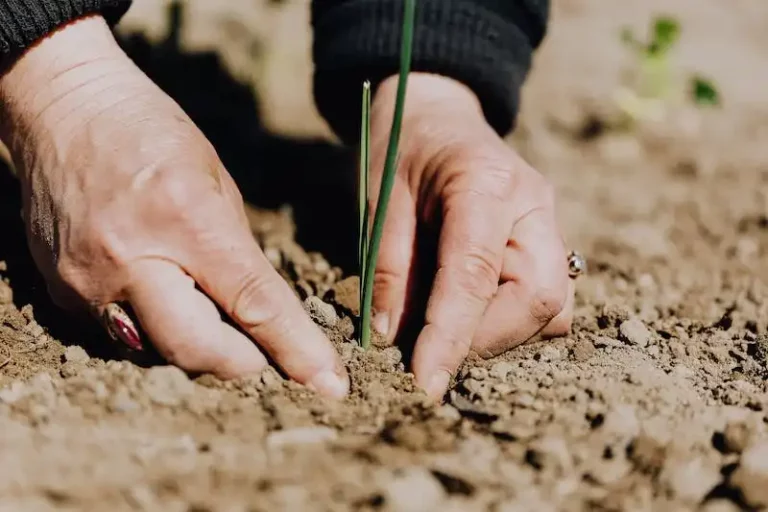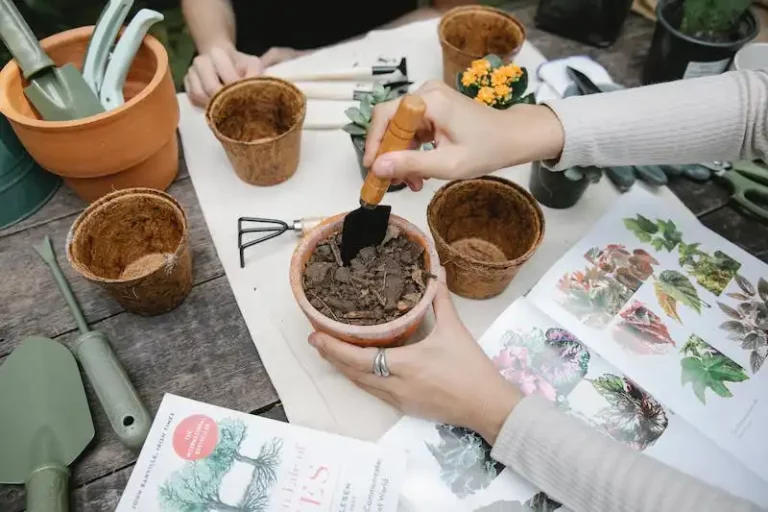Thomas Jefferson’s Monticello is a historic plantation located in Charlottesville, Virginia. It was the primary plantation of Thomas Jefferson, the third President of the United States. Monticello is known for its beautiful gardens, which showcase a wide variety of plants and flowers.
One of the flowers that Jefferson was particularly fond of was the dianthus, commonly known as the “carnation-pink.” These fragrant flowers, with their textured petals and pale pink color, were a favorite of Jefferson’s and can still be found in the gardens at Monticello. The word “dianthus” comes from the Greek words “dios” and “anthos,” meaning “divine flower,” which is certainly fitting for these beautiful blooms.
Jefferson was a great lover of horticulture and spent a significant amount of time tending to his gardens at Monticello. He was known to experiment with different plant varieties, and it is believed that he introduced many new plants to American gardens during his time. In fact, Jefferson was so passionate about horticulture that he even served as the first President of the American Philosophical Society, which was dedicated to the study of plants and natural science.
In addition to his love for flowers, Jefferson also had a passion for fruit trees. He is said to have planted more than 200 fruit trees at Monticello, including apple, peach, and cherry trees. Jefferson was known for his interest in agriculture and believed in the importance of self-sufficiency, which is why he invested so much time and effort into maintaining his gardens and orchards.
The gardens at Monticello were not only a source of pleasure for Jefferson but also a reflection of his beliefs and values. He saw the garden as a microcosm of the larger landscape and believed that it should be designed in harmony with nature. Jefferson’s gardens at Monticello were designed to be both functional and beautiful, and they continue to inspire and delight visitors to this day.
Dianthus
Dianthus, also known as pinks or carnations, are a type of flowering plant that has a long and interesting history. The word “dianthus” comes from the Greek words “dios” meaning divine and “anthos” meaning flower. The name is certainly fitting, as dianthuses produce beautiful and fragrant flowers.
Dianthuses are believed to have originated in the eighteenth century and were named by the Swiss botanist Carl Linnaeus. The plant is a member of the Caryophyllaceae family and is native to Europe, Asia, and Africa. There are many different varieties of dianthus, with some being perennials and some being annuals.
The flowers of dianthus come in a wide range of colors, including shades of pink, red, white, and purple. The petals of the flowers are usually laced or pinked, giving them a distinctive appearance. Dianthuses are known for their beautiful and fragrant flowers, which can vary in size and shape depending on the variety.
One interesting fact about dianthuses is that the name “pinks” comes from the old English word “pynken” which means to decorate with a pattern. This refers to the characteristic pinked petals of the flowers. Another interesting fact is that dianthuses were a favorite flower of Thomas Jefferson, the third President of the United States. He planted them in his garden at Monticello and wrote about them in his garden diary.
Dianthuses are relatively easy to grow and are a popular choice among gardeners. They prefer well-drained soil and full sun, although they can tolerate light shade. Dianthuses are known for being drought-tolerant and can survive in a variety of soil types. They are also relatively pest-resistant, although they can be susceptible to certain diseases such as root rot.
In addition to their beauty, dianthuses have also been used for their medicinal properties. The flowers and leaves of the plant were used by Native American tribes for various purposes. For example, the leaves were used to treat poison ivy, while the flowers were used to make a poultice for wounds.
In conclusion, dianthuses are a beautiful and fragrant flower with a rich history. Whether you prefer the delicate pink petals of the carnation-pink dianthus or the bold red flowers of the royal dianthus, there is a variety for everyone. So next time you see a dianthus in bloom, take a moment to appreciate its beauty and the history behind it.
About Dianthus Flowers
Dianthus flowers are a type of flowering plant that belongs to the carnation family. They are also known as “pinks” or “gilliflowers.” The name “dianthus” comes from the Greek words “dios” and “anthos,” which mean “god” and “flower” respectively.
Dianthus flowers are usually planted in bands or clusters and can be found in various colors, although they are most commonly seen in shades of pink. They have a delicate petal texture and are often described as being “carnation-pink.”
The history of dianthus flowers can be traced back to ancient times. They were mentioned in writings by Theophrastus, a Greek philosopher and botanist, as well as by Pliny the Elder, a Roman naturalist. Indian gilliflowers were eaten by some American Indian tribes, and the leaves were used for medicinal purposes.
Dianthus flowers are perennials, which means they can live for several years. They can tolerate light frosts and are known for their fragrant scent. Dianthus flowers are a popular choice among gardeners and have been registered in dozens of varieties by the Royal Horticultural Society.
| Dianthus Facts | |
|---|---|
| Scientific Name | Dianthus caryophyllus |
| Native to | Europe and Asia |
| Height | About 8-18 inches |
| Width | About 12-24 inches |
| Blooming Period | Spring to early summer |
| University School Flower | University of Delaware |
In conclusion, dianthus flowers are a beautiful addition to any garden. Their fragrant and colorful blooms, along with their rich history, make them a favorite choice for many gardeners. Whether they are planted in bands or clusters, dianthus flowers are sure to add a touch of elegance and beauty to any landscape or garden.
Pinks Gilliflowers Carnations
Pinks, gilliflowers, and carnations are all types of Dianthus flowers. The name “carnation” comes from the Latin word “carnis,” which means “flesh,” referring to the original color of the flower. The name “gilliflower” is derived from the French word “girofle,” which means “clove,” describing the fragrant nature of the flowers.
These flowers have a long history, dating back to ancient times. In fact, they were mentioned by Theophrastus, a Greek philosopher, and botanist who lived around 300 BCE. They were also cultivated in the gardens of the University of Padua and the Royal Botanic Gardens in Glasgow during the sixteenth century.
Dianthuses are perennials, meaning they can tolerate colder climates and come back year after year. They are known for their beautiful flowers, which have a delicate texture and come in various shades of pink, red, white, and even yellow. The petals of these flowers are usually fringed or laced, giving them a unique and attractive appearance.
In the eighteenth century, Thomas Jefferson, the third President of the United States, planted pinked gilliflowers in his garden at Monticello. Jefferson was an avid gardener and took great interest in experimenting with different types of plants and flowers. He also kept detailed records of his gardening activities, which provide valuable insights into the plants he cultivated.
Although they are called carnations, these flowers are not related to the common commercial carnations we see today. The modern carnation, also known as Dianthus caryophyllus, comes from the Indian subcontinent and was introduced to Europe in the sixteenth century. It is a larger flower with a different texture and appearance compared to the traditional pinks and gilliflowers.
Pinks, gilliflowers, and carnations are not only admired for their beauty but also for their fragrance. The flowers emit a pleasant scent that is often used in perfumes and potpourri. In addition, the leaves of some Dianthus species can be eaten and have a spicy flavor. However, it is important to note that some Dianthus plants, like the Poison Pink, can be toxic if ingested.
Today, gardeners can still enjoy the beauty and fragrance of pinks, gilliflowers, and carnations in their own gardens. These flowers are easy to grow and maintain, making them popular choices for both novice and experienced gardeners. Whether planted in borders, mixed with other perennials, or featured in containers, these flowers add a touch of elegance and charm to any landscape.
Pinks Flowers
The term “pinks” usually refers to a type of flower known as Dianthus, which comes in a variety of colors including pink, white, and red. These flowers are a popular choice among gardeners and have a long history dating back to ancient times.
The word “dianthus” is derived from the Greek words “dios” meaning divine, and “anthos” meaning flower. The name is certainly fitting, as these flowers are known for their fragrant and beautiful petals.
Pinks, also sometimes called carnations, are perennials, meaning they can grow year after year. They are usually light pink in color, although some varieties can be pale or even dark pink. The flowers have a textured petal with a laced or pinked edge, giving them a unique and elegant appearance.
Although pinks are native to Europe, they have become naturalized in many parts of North America, including Thomas Jefferson’s Monticello estate in Virginia. Jefferson was an avid gardener and his gardens at Monticello were filled with a wide variety of plants and flowers, including pinks.
The origin of the name “pinks” is not entirely clear, but one theory suggests that it comes from the word “gilliflowers,” which is a common name for a different type of flower called Dianthus barbatus. Another theory is that the name comes from the fringed edges of the petals, which resembled the fabric known as “pinking.”
In addition to their beauty, pinks also have a practical use. The flowers are edible and can add a pop of color to salads or desserts. They have a slightly spicy flavor and were often used in cooking during the eighteenth century.
Pinks are also known for their tolerance for different growing conditions. They can thrive in full sun or partial shade and prefer well-drained soil. They are often planted in borders or mixed with other flowers in a garden or landscape.
In addition to their use in gardens, pinks have also made their way into cultural traditions. In American history, pink flowers were often used as a symbol of romance, and were commonly given as gifts. They were also a popular choice for corsages and boutonnieres at weddings and other special occasions.
Today, pinks continue to be a beloved flower around the world. Thanks to their fragrance, beauty, and versatility, they remain a favorite among gardeners and flower enthusiasts. Whether planted in a formal garden or enjoyed in a vase, pinks add a touch of elegance and color to any setting.
| Fact Table |
|---|
| Theophrastus, a Greek philosopher, wrote about pinks in the 4th century BC. |
| Pinks are part of the carnation family, known as Caryophyllaceae. |
| The pinked edges of the petals gave rise to the word “pinking” in the world of fashion. |
| The University of Pennsylvania in Philadelphia has a variety of pinks named after it. |
| John Gerard, an English botanist, first registered the word “carnation-pink” in 1597. |
| Gilliflowers, another name for pinks, comes from the Old English word “gilofer,” meaning “yellow poison,” due to the poisonous nature of some Dianthus species. |
| Pinks were a popular flower during the Indian royal court, often used for garlands and in decorative headbands. |



